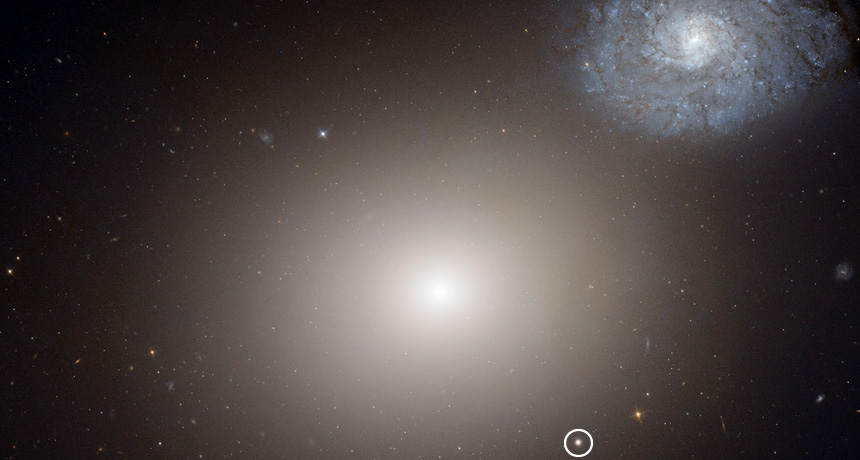Enormous black hole resides at core of tiny galaxy
Dark giant stores 15 percent of parent star cluster’s weight

ITTY BITTY LIVING SPACE The tiny galaxy M60-UCD1 (circled in white) harbors a black hole with the mass of around 21 million suns. M60-UCD1 may be a remnant of a larger galaxy torn apart by the massive galaxy M60 (center), which is also pulling in a nearby spiral galaxy (upper right).
NASA, ESA